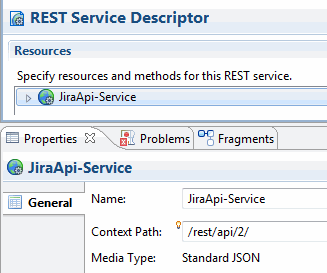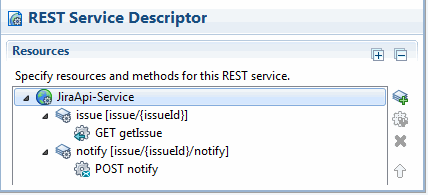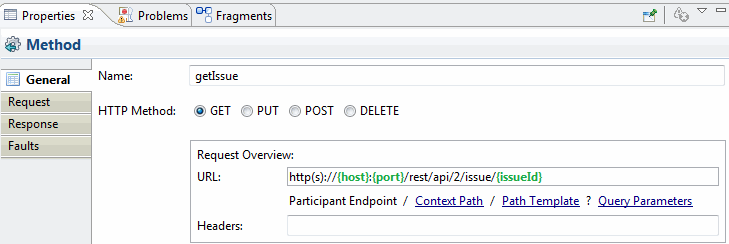Defining the Interface to an External REST Service
To call a REST Service you need to create a REST Service Descriptor (RSD) file (located in a separate REST Service project). The REST method from the RSD file can then be referenced from REST Service invocation activities.
The purpose of the REST Service Descriptor (RSD) is to define the end-point URL relative resource path (optionally including query and header parameters), the available methods for the resource and the request-response data details for those methods.
Note: You should not use URL encoding (for instance
%20 for spaces) in the Context Path of the Resource path definition in the REST Service Descriptor. Also, you should not encode values in Path Parameters (that is, the value of data fields mapped to those parameters). This is because the path and parameter values are automatically encoded at runtime. If there is a use case where the path may require URL delimiter characters (such as /, @ , ? etc) that need to be encoded then simply use a path parameter in the required location and then provide the required unencoded values in the data mapped to the parameter.
Procedure
Copyright © Cloud Software Group, Inc. All rights reserved.







